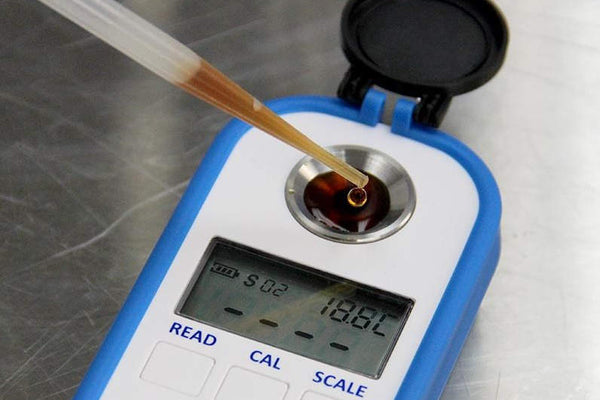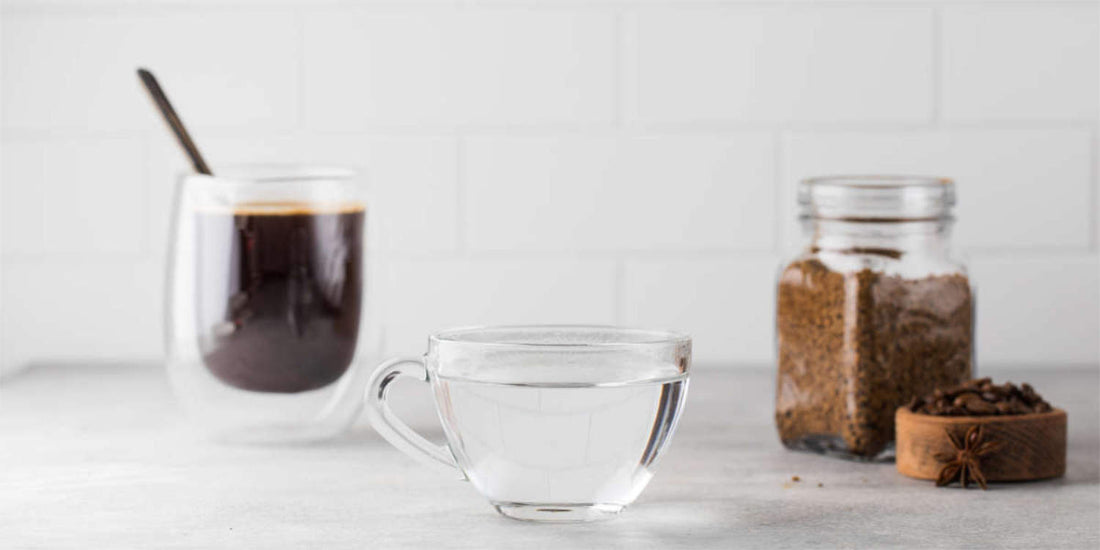What is TDS
Water and coffee share an integral similarity - dissolved solids that give them their distinctive flavor. Through Total Dissolved Solids (TDS), you're able to objectively assess the taste of both water and coffee. It's a simple way for individuals to ensure they are consuming drinks of top-notch quality
Already conversant with what TDS coffee is? Let's explore how the TDS of water and that of coffee contrast if they are related, as well as learn about ways to measure each parameter.
Parts per million (abbreviated as ppm) and milligrams per liter (mg/L) are both popular methods used to measure Total Dissolved Solids, also known as TDS. The fact that 1 ppm is equivalent to 1 mg/L means there is no conversion factor needed when switching between the two scales.
TDS of water

The optimal TDS of water is 75-250 mg/l (75-250 ppm)
In Europe, the Total Dissolved Solids (TDS) of water is measured in milligrams per liter (mg/l), while Western nations measure it in Parts Per Million (PPM). Both measurements are interchangeable.
The Specialty Coffee Association (SCA) has developed standard water parameters for brewing coffee. The organization has determined that an acceptable TDS level for water is 75–250 mg/L,(75-250 ppm) and an ideal level is 100–150 mg/L (100-150 ppm). All elements except for H2O - namely, inorganic salts such as calcium, magnesium, potassium, sodium, bicarbonates, chlorides, and sulfates, along with a minuscule amount of organic compounds—comprise the TDS of water.
Water effects on taste
With TDS levels that are lower than normal, the water will be too soft. Distillates on the other hand have a zero-TDS rate, meaning they lack essential minerals and thus dissolve more substances faster. If you brew coffee in distilled water it'll extract far too quickly resulting in an overly bitter flavor.
If your water's Total Dissolved Solids (TDS) exceeds the normal level, it will be too hard to extract flavor from the coffee. Tap water with a TDS of around 300 mg/l (300 ppm) is an example - since it already contains many substances, adding more during brewing decreases its ability to dissolve other components in the beans. This means that coffee brewed using this type of water will have an underdeveloped taste and aroma.
The Total Dissolved Solids (TDS) of water can be accurately determined using a TDS meter. Its function is based on the conductivity of water, as it has no charge by itself. Distilled or pure water is known to have poor electrical conduction because there are very few minerals and salts dissolved in it, however its ability to carry current increases with an increase in soluble substances present inside the liquid. The device creates an electric field that measures how fast electricity passes through the sample of water.
Methods of regulating TDS
Regulating TDS levels is attainable through filtration. An excellent option would be to use reverse osmosis filters that will maintain a steady amount of Total Dissolved Solids in the water you consume. Bottled mineral water could also prove beneficial if deemed suitable for your needs, as discussed further in our article regarding which type of H2O should accompany coffee!
TDS of coffee

source Keg Outlet. The optimal TDS of coffee is 1.15–1.35%
The TDS of coffee is measured in %. For example, a coffee with a TDS of 1.12% means that the cup contains 98.88% water and 1.12% solids.
The Specialty Coffee Association (SCA) has developed the Golden Cup standard, which specifies the parameters for making the perfect filter coffee. The TDS of coffee should be 1.15-1.45%.
Refractometers utilize the concept of refraction to measure the TDS of coffee. Refraction takes place when light passes through an interface between a medium, like air or water. The speed of light in both media is dissimilar and because of this difference, it bends at an angle that prevents it from entering the liquid surface, instead, all of its energy reflects off the boundary. The refractometer measures these angles and interprets them as data points which provides us with concrete concentrations.
When the content of dissolved substances is increased, the refractive index rises conversely, a decrease in content causes it to fall.
When brewing coffee, a concoction of esters, caffeine, and organic acids - such as citric acid, malic acid, and lactic acid - is dissolved in the drink. This blend forms what's known as the Total Dissolved Solids (TDS) in your cup of specialty coffee, which ultimately gives it its unique aroma and flavor.
Does the TDS of water affect the TDS of coffee?

You can experiment and brew 2 identical coffees, but use different water: with TDS 90 mg/l (90 ppm) and TDS 500 mg/l (500 ppm). As a result, the TDS of both drinks will be about the same.
However, despite a similar total dissolved solids (TDS) level of coffee beans, the flavor can range from bland to extremely sour or bitter. This is because water interacts differently with each set of elements in ground coffee and dissolves them at distinct rates. To ensure consistently delicious craftsmanship and abide by all SCA standards for brewing excellence, it's important to routinely check your TDS levels.
Summary
For Measure water TDS:
- Use TDS meter (mg/l or ppm)
- Acceptable 75–250 mg/l, ideal 100–150 mg/l
- Low water TDS - overly saturated coffee, high - empty coffee
For Measure coffee TDS:
- Use Refractometer (%)
- SCA standards 1.15–1.45% for filter coffee
- Low TDS coffee - unsaturated coffee, high - overly saturated coffee


3 comments
Hi, Gerald! Using a TDS meter on coffee is tricky because coffee besides the water has also oils, different kinds of compounds and and solids, it all comes from the coffee bean itself. And using a TDS meter will not help you to understand how much all of the above dissolved in it.
To measure the extraction you need to use a refractometer, it will help you to get a more accurate understanding of the coffee solubles concentration.
@Gerald
To test the TDS level of your coffee, you will need a refractometer which is professional and expensive measurement equipment. Just make sure the TDS of coffee is measured in % not in ppm.
Why can’t you use a water TDS meter to measure the TDS of coffee?